
Warming up your muscles before a workout is essential to staying a happy, healthy runner. Before partaking in any form of physical activity, you should always remember to limber up. If you rush into a workout, it’s likely that you will pull a muscle, and without an adequate cooling-off time it will take longer to repair itself.
No more than ten minutes is required for a beginner to stretch all of the appropriate areas, but when planning your weekly workouts, always factor this time in, both for warming up and cooling down. If you forget, you’ll soon notice when you wake up the next day with sore, aching muscles.
Dynamic stretches are considered to be more effective than static ones, as they loosen everything up, removing stiffness quicker. Even after warming up, though, take the first five minutes of your workout at a more leisurely pace to ensure everything is moving and working efficiently.
The purpose of warming up is not just to relieve stiff muscles, but to raise your heart level, get your blood pumping and get you motivated for a training session. A typical warm-up for a novice runner should begin slowly with a light walk, gradually building up to a faster-paced walk or light jog over the course of five minutes. With your muscles warmed up nicely, move onto some dynamic stretches composing of knee lifts, lunge walking, squats and some side-stretching. Once you have done these aerobic warm-ups, you can stretch out any other areas you feel need extra loosening. Never go straight into stretching cold muscles, as you will run the risk of pulling something.
Cooling down doesn’t take as long as warming up, but it’s just as important. Finish off your workout with a light jog or fast-paced walk for five minutes, decreasing in momentum as your breath returns to a more normal level. Once you have caught your breath, stretch out your muscles. Ensure your calves (lower legs), hamstrings (upper back of leg), quads (upper front of leg) and glutes (bottom muscles) are stretched out to ensure there’s no onset muscle soreness in days to come. Also, spend a few minutes focusing on sidestep stretches and hip flexes to avoid cramp and groin strain.
When stretching, hold each pose for 15-30 seconds for the best results and don’t rush them, repeating each stretch several times. Featured here are some of the most basic but fundamental stretches you need to incorporate into each warm-up/cool-down session. More flexibility will come with time, but for now, take it easy; don’t force muscles to stretch further than they can comfortably.
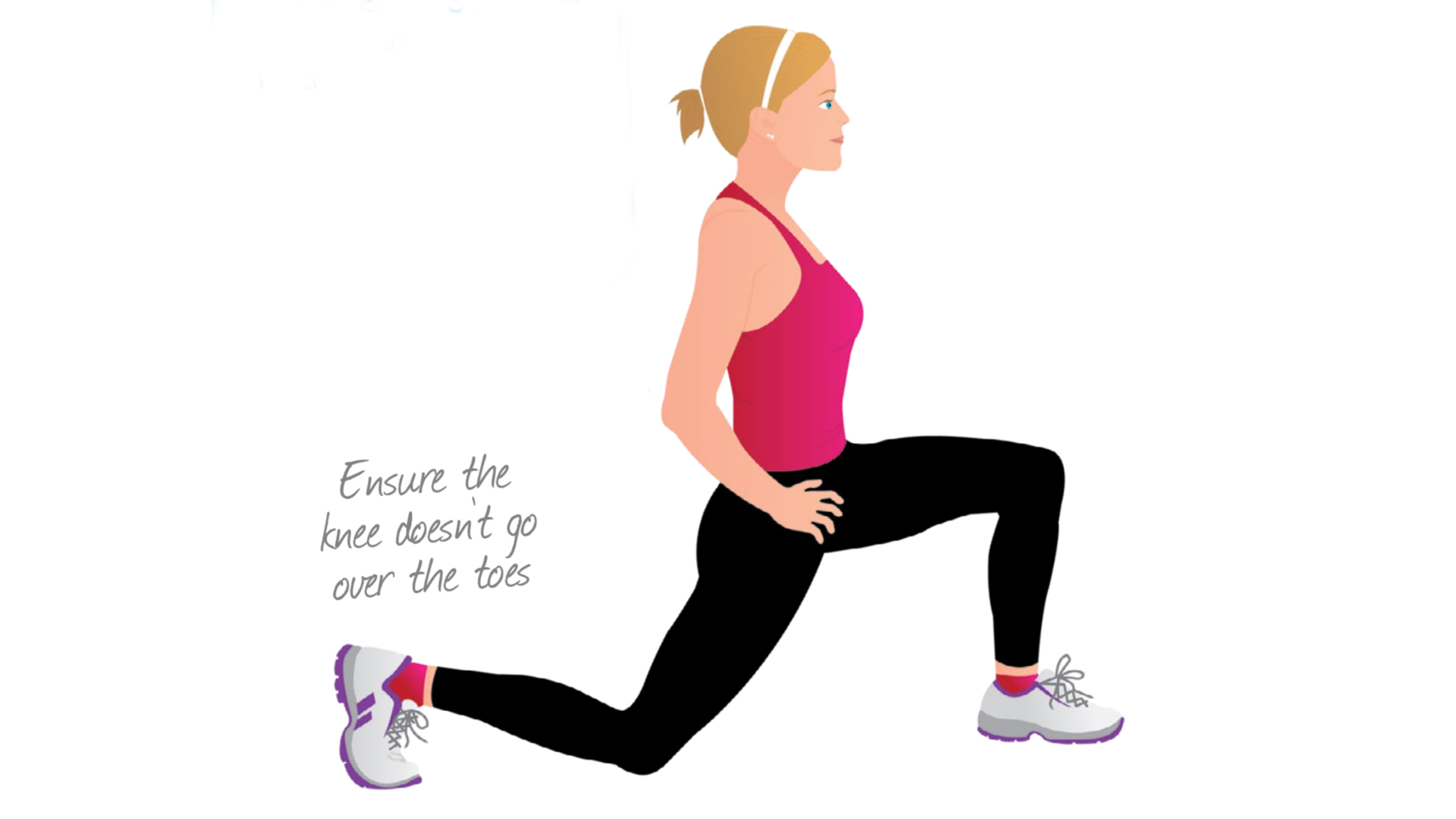
Hip flexor stretch
Start your week with achievable workout ideas, health tips and wellbeing advice in your inbox.
An elongated lunge that stretches out hips and leg muscles. Keep your knees in line with your ankles, and make sure that your body is straight.

Gluteus muscles
Sit on the floor, lift one ankle and rest it on the opposite knee, applying a little pressure onto the knee and pushing downwards. This will stretch out the bottom muscles relieving any hip pain.
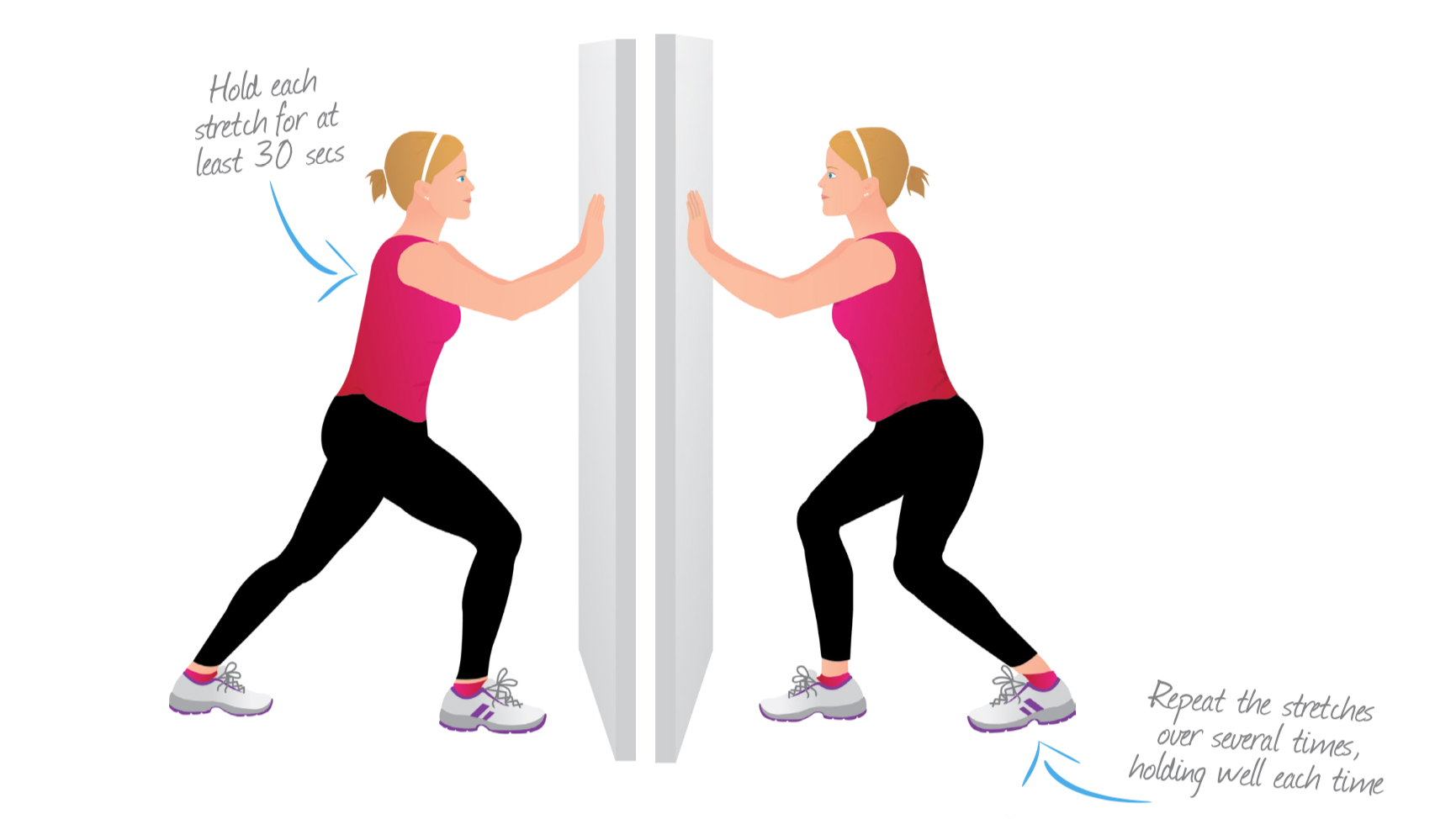
Upper calf and lower calf
Push against a surface, ensuring your back heel is firmly on the floor and back leg is straight. Hold for 15-30 seconds, leaning further into the stretch as it becomes more comfortable; there shouldn’t be a lot of pressure on the front leg. Repeat for both legs several times.
Remember to stretch out the lower part of the calf. To do this, take the usual calf stretch pose (above) then bend the back knee. Lean further into the stretch for more resistance. There should be little to no pressure exerted on the front leg.
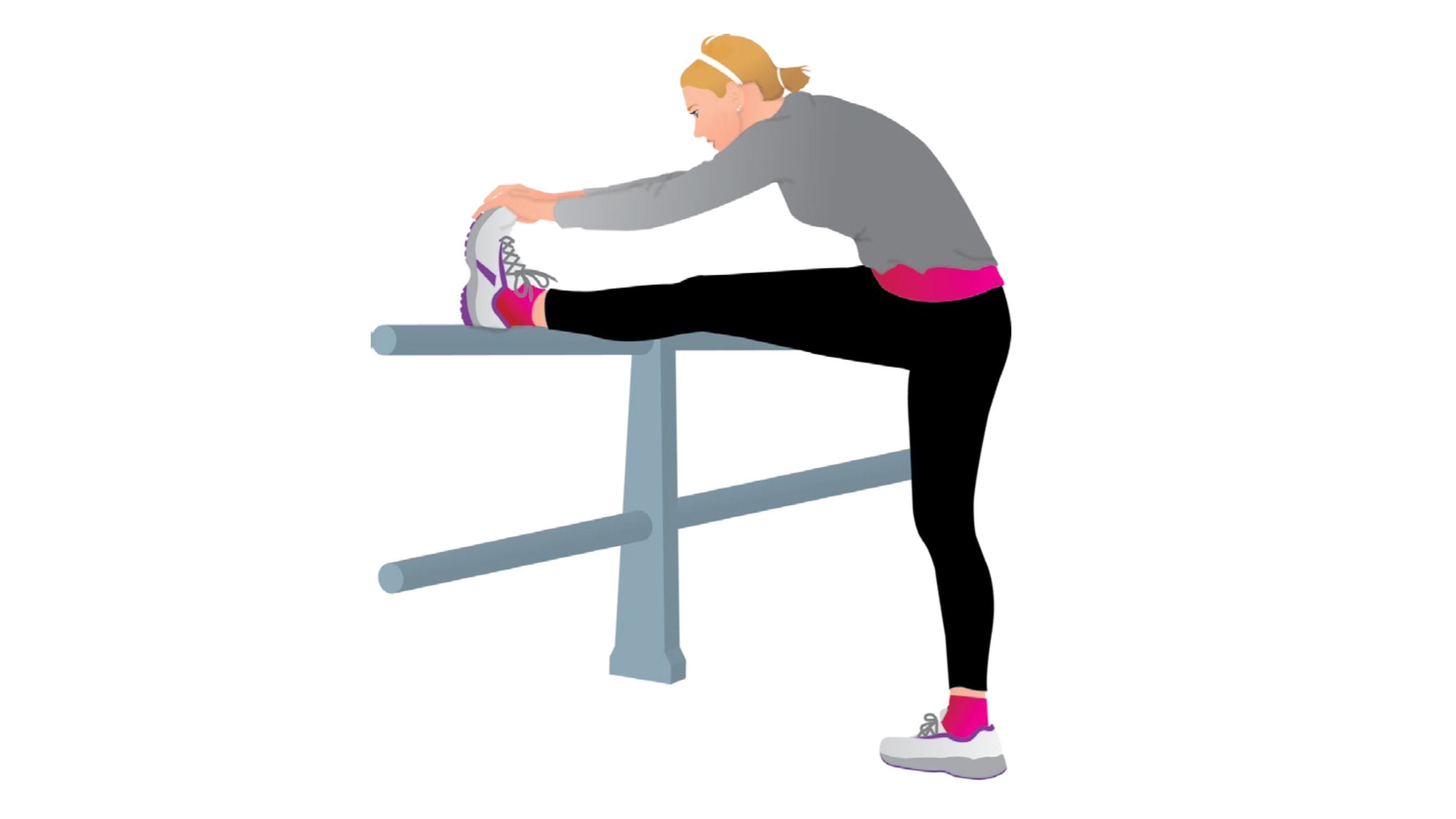
Hamstring
There are several ways to stretch this muscle out; simply touching your toes is effective, but also try lifting your leg onto a high surface and leaning into the stretch. You can increase this with a resistance band. Repeat several times over, and each time you breathe out, lean into the stretch a little bit more.
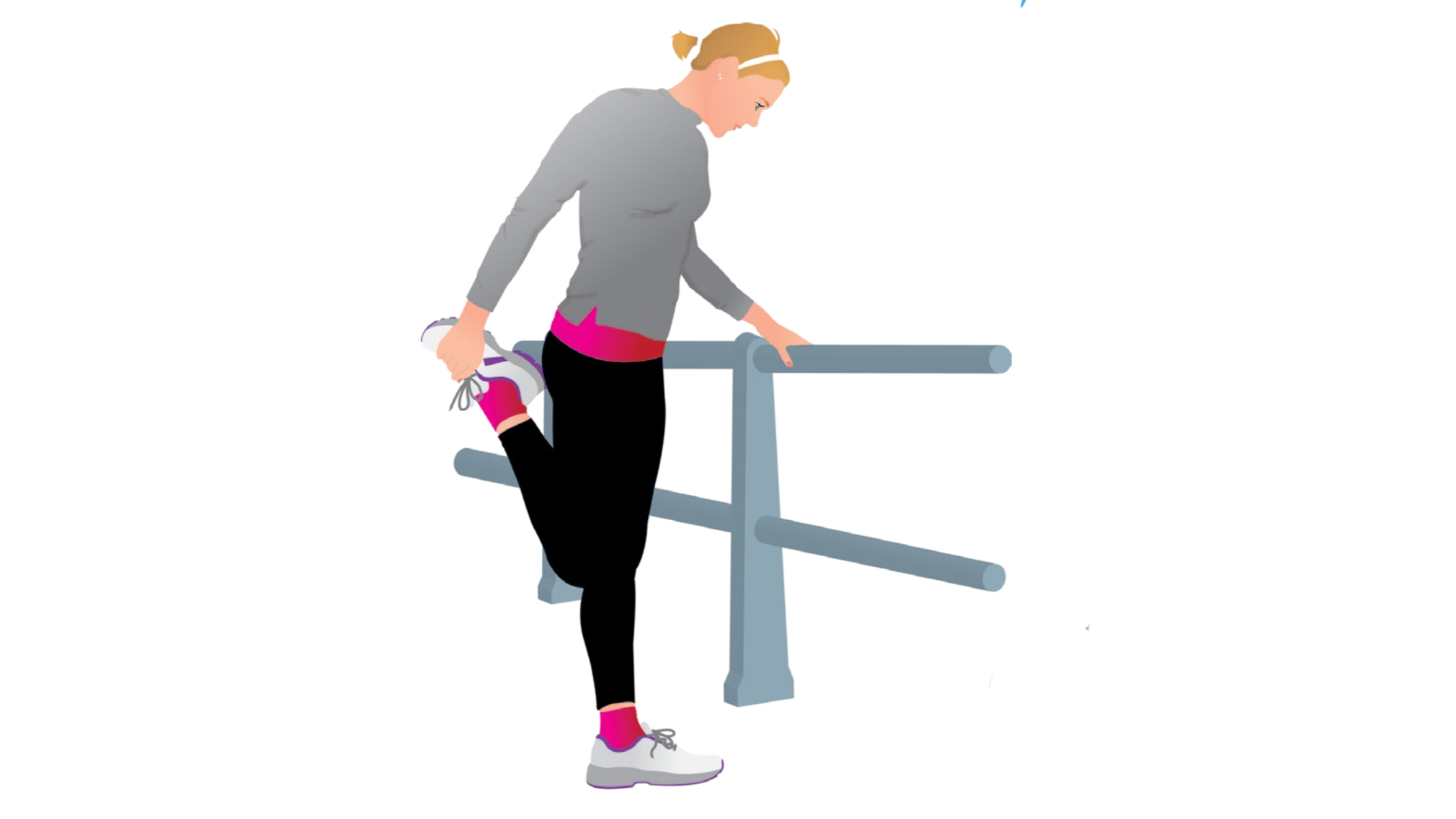
Quads
Pull your ankle up to your bottom, and hold with both hands. Make sure that your knees are in line, and push your hips forwards, ensuring the best stretch possible.
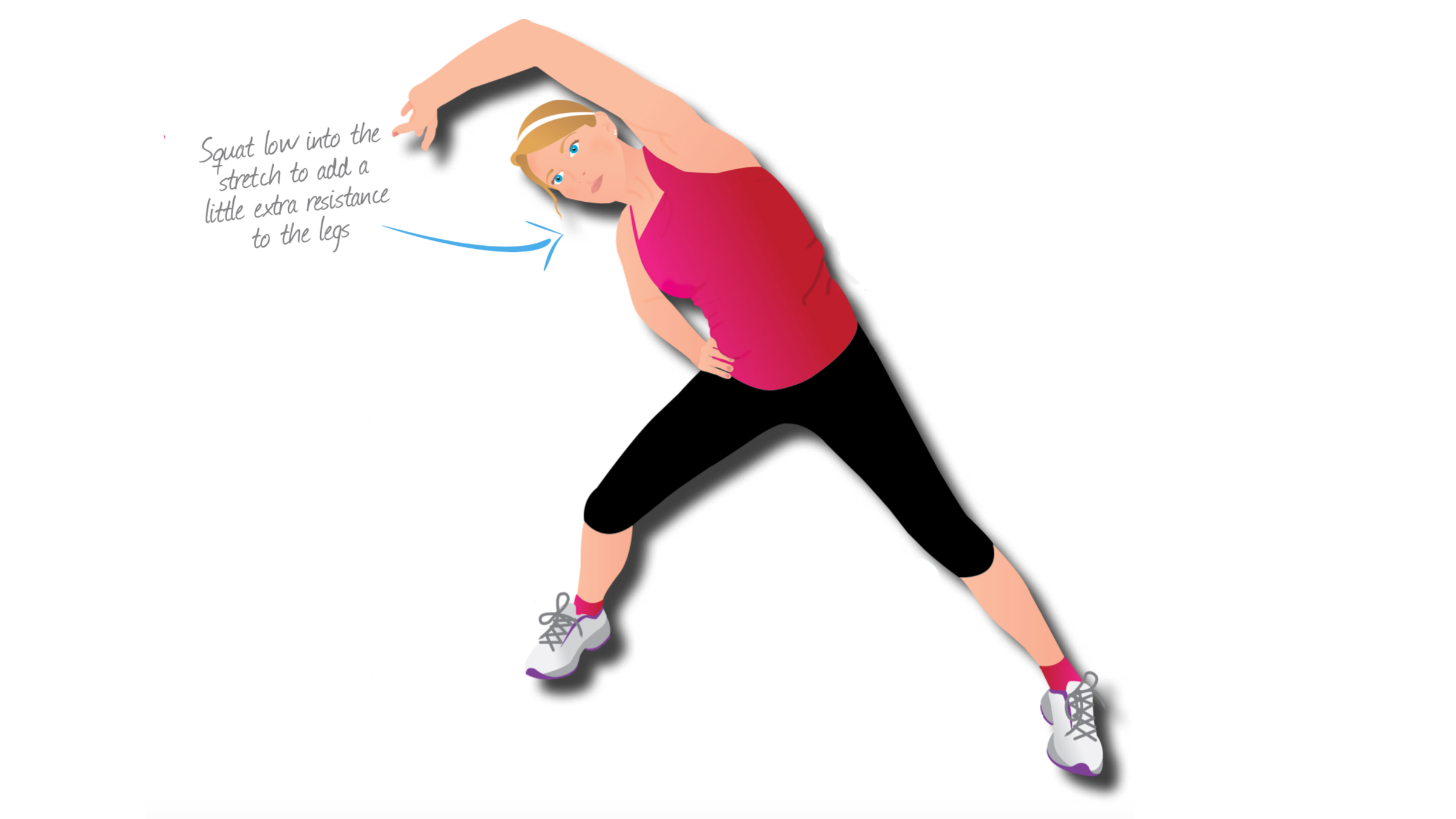
Side stretch
This move will stretch out your hips, but also your groin muscles. This is a vital one for new runners, as a groin strain can bench you for many weeks.
Liked this?
Launched in 2020, Fit&Well.com is all about helping you meet your health and fitness goals in ways that are fun and achievable. With news and features on fitness, weight loss, running, nutrition, yoga, wellness and more, we're committed to helping you wherever you are on your fitness journey. We break down the best fitness tech, with reviews, buying guides and the latest deals on fitness and wellness kit, from dumbbells to diffusers.
We cater for all difficulty levels here. It doesn't matter if you're a beginner in the world of fitness or you're gearing up for your tenth marathon: we're all moving towards the same goal – creating a healthier, happier you. From guides on getting started doing walks around the block, to creating the perfect work-from-home space, to eating to fuel your first triathlon. It's all here.

